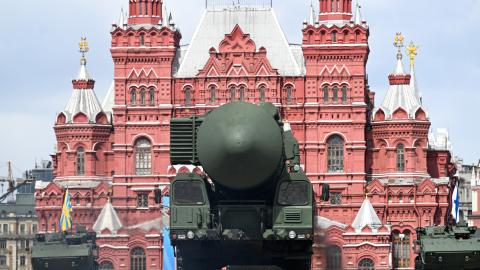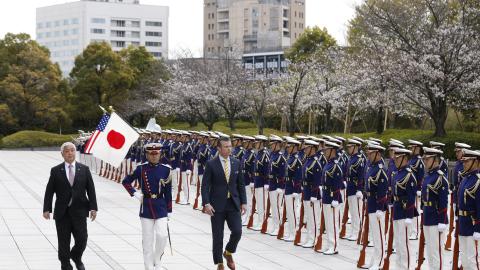American trade policy is focused on steel, gasoline-powered cars, and coal; China’s is focused on robots, electric vehicles, and solar panels.
Our president has his eyes firmly fixed on the rear-view mirror as he attempts to throw his SUV into reverse and head for the past, hoping to spend billions shoring up decrepit bridges along our internal infrastructure. China’s president is focused on the road ahead, a modern version of the old Silk Road: The $1trillion globe-girdling work-in-progress, launched in 2013 and known as the One Belt One Road, will be a network of ports, pipelines, railways and industrial parks, and ancient maritime lanes. It will span 65 countries stretching from China to Europe. The goal is to open markets now beyond the economic reach of Chinese firms, tap natural resources that a growing Chinese economy will require, and splash cash to win friends and influence policy along the way.
Donald Trump’s needy ego requires him to believe that he charmed Xi Jinping at a dinner party at Mar-a-Lago, after which the Chinese allowed us to sell some frozen meat in their country and voted for a North Korean sanctions resolution at the United Nations (but only after watering it down very significantly). For example, there are no restrictions on food exports to North Korea. So China’s exports of corn and wheat to its neighbor are up 100 times and 11 times, respectively, over last year—Xi’s contribution to prevent the people of North Korea from starving while the regime devotes resources to acquiring nuclear weapons and rockets capable of reaching the United States.
It has long been a comforting theory among economists in free-market capitalist countries that centrally-directed economies sooner or later collapse under the weight of their internal contradictions, the Soviet Union being only the latest example. China may be about to prove that a repressive government can indeed propel a country into global economic leadership with a combination of central planning, protectionism, and the use of military power and investments to control the trade routes of the world. Here’s how:
First, use currency manipulation as an important weapon in building national economic power, undervaluing the yuan when necessary to stimulate exports, driving its value upward when necessary to stem capital flight.
Second, protect old, inefficient, state-owned enterprises with subsidies and buy-China rules to prevent unemployment from rising to levels that threaten the regime, and to assure the managerial class’s obedience to the state.
Third, spend whatever it takes to dominate the industries of the future. The ten on which virtually unlimited subsidies are being lavished in Xi’s “Made in China 2025” campaign include aerospace; cloud computing; integrated circuits; bio-pharmacy; artificial intelligence. (Cheap trainers and t-shirts are so yesterday.)
Fourth, If possible, buy foreign companies that have the necessary technology and when that doesn’t get the needed intellectual property, follow the dictates of Lenin, who famously said that the capitalists would sell the Soviets the rope with which to hang them. No foreign firm can have access to China’s market unless it shares its technology with a Chinese partner, which most American firms are willing to do. And if all else fails, steal whatever intellectual property is needed to allow the hometown boys to dominate global markets.
Fifth, to make certain that no foreign country can derail these plans, build a military capable of preventing the sort of reaction that at one time saw China vulnerable to foreign intervention—and humiliation. That includes a blue-water navy and construction of islands that allow China to control the South China Sea and a trade route through which some 40 percent of the world’s trade must pass.
While building these dominant positions, do not make the mistake Japan made on December 7, 1941, on what it thought was its road to world power: do not arouse the United States to action.
* Persuade Donald Trump that you are being helpful with his North Korea problem while making certain that the Kim regime does not collapse.
* Offer tiny concessions on trade in goods of no strategic consequence.
* Protest, but hold fire if an occasional U.S. destroyer sails close to an artificial island in the South China Sea.
And gamble that the United States will not use the tools available to it to upset China’s plans, perhaps by laying on an overwhelmingly lavish reception that allows the American president to believe he is indeed among friends, a guest whose negotiating skills they hold in awe. Unfortunately, Trump has denied himself use of the most powerful tool of all: the Trans-Pacific Partnership agreement. But he can tell Xi that unless China rebalances the currently unfair economic relationship between the two countries he will:
* Back Representative Robert Pittenger’s campaign to block Chinese firms from acquiring tech-heavy U.S. companies such as Lattice Semiconductor Corp, the Chinese bid for which was turned down by our government last month;
* Not allow China’s $800 billion sovereign wealth fund to realize its goal of investing more in the United States until China removes restrictions and conditions on American firms;
* Trigger Section 301 of the Trade Act of 1974 which holds that if the investigation now underway by the U.S. Trade representative finds China guilty of violating U.S. property rights and other acts that place an unreasonable burden on U.S. commerce the president can take “all appropriate . . . action.” No drawn-out World Trade Organization proceeding needed.
Alternatively, Trump can be dazzled by the personal attention, strut, talk about minor trade matters, and confirm Xi in his judgement that his hero Mao had it right when he said, “America is . . . an old cucumber painted green.” Or, now, a nation that increasingly relies on coatings of gilt to distract observers from the weaknesses beneath.
















